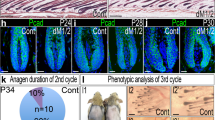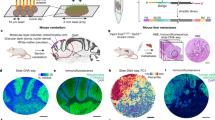Abstract
IN investigating the cell proliferation of normal tissue in rodents individual animals have to be used for each experimental time interval and thus the problem of inter-animal variation is always present. This presents a particular problem when the cell cycle is investigated by the method in which the fraction of mitoses labelled is plotted against time1.
This is a preview of subscription content, access via your institution
Access options
Subscribe to this journal
Receive 51 print issues and online access
$199.00 per year
only $3.90 per issue
Buy this article
- Purchase on Springer Link
- Instant access to full article PDF
Prices may be subject to local taxes which are calculated during checkout
Similar content being viewed by others
References
Quastler, H., and Sherman, F. G., Exp. Cell Res., 17, 420 (1959).
Bullough, W. S., Nature, 193, 520 (1962).
Cattaneo, S. M., Quastler, H., and Sherman, F. G., Nature, 190, 923 (1961).
Author information
Authors and Affiliations
Rights and permissions
About this article
Cite this article
GRIEM, M. Use of Multiple Biopsies for the Study of the Cell Cycle of the Mouse Hair Follicle. Nature 210, 213–214 (1966). https://doi.org/10.1038/210213a0
Issue Date:
DOI: https://doi.org/10.1038/210213a0
This article is cited by
-
Changes in the cellularity of the cortex of human hairs as an indicator of radiation exposure
Radiation and Environmental Biophysics (1996)
-
Pathologic S-phase in the cells of eccrine sweat glands and of hair follicles in psoriasis
Archives of Dermatological Research (1980)
Comments
By submitting a comment you agree to abide by our Terms and Community Guidelines. If you find something abusive or that does not comply with our terms or guidelines please flag it as inappropriate.



